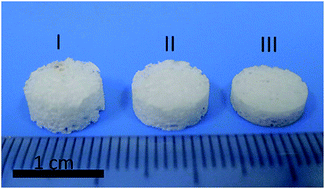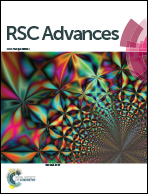Highly porous ceramics based on ultralong hydroxyapatite nanowires
Abstract
For the first time, ultralong hydroxyapatite (HAP) nanowires with lengths longer than 200 μm are used to fabricate highly porous HAP ceramics using palmitic acid spheres as pore formers. The effects of the aspect ratio of HAP and the addition amount of palmitic acid spheres on the formation of HAP porous ceramics are investigated and compared with commercial HAP nanoparticles. The ultralong HAP nanowires can cross-link with each other, leading to much stronger interaction among HAP nanowires than HAP nanoparticles. During the sintering process, although palmitic acid spheres are decomposed at high temperatures, ultralong HAP nanowires can be well preserved and still support the whole porous structure stably, leading to the formation of highly porous HAP ceramics with high biocompatibility. The porosity of the HAP nanowire porous ceramics can be easily tuned. The as-prepared HAP nanowire porous ceramics exhibit good biocompatibility, good performance for cell adhesion and spreading, and cell proliferation. Thus, the as-prepared HAP nanowire porous ceramics are promising for applications in various biomedical fields.


 Please wait while we load your content...
Please wait while we load your content...